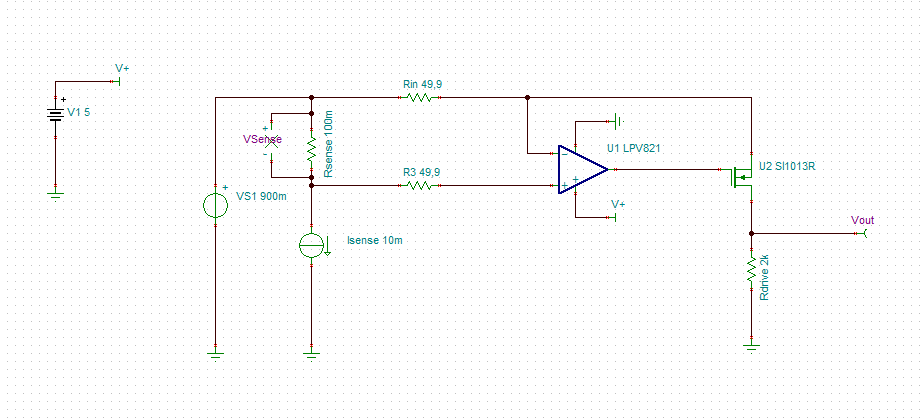Hi,
I am making a high side current sense using LPV821 and Si7948(PMOS from Vishay).
During simulation(Transient analysis) I can see a peak initially. Please see the attached image. May I know is this due to the fault in my circuit or the
way I am doing simulation in TINA is wrong(I am new to Tina). May I know how to sweep the current source from
.2mA to 100mA with a step of 0.005mA.
Regards
Hari
LPV821_CS - autosave 18-08-16 12_42.TSCI am also attaching the simulation file along with this.




